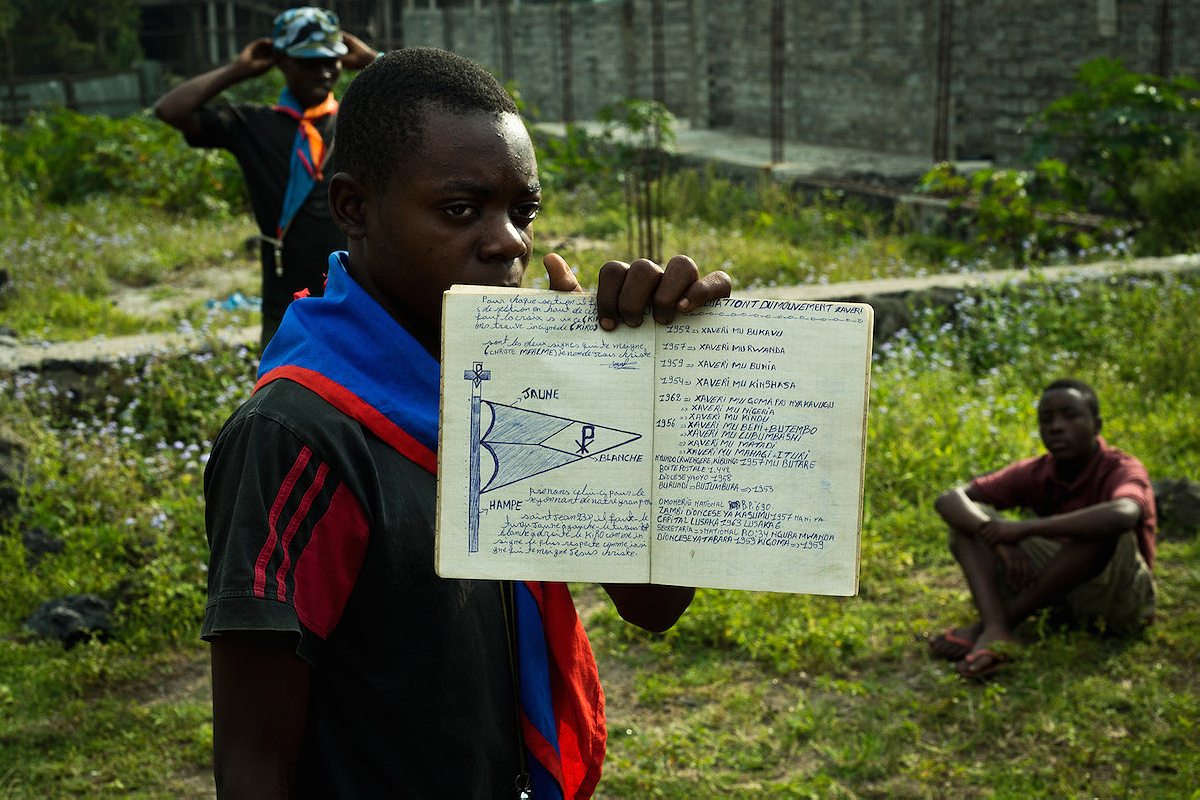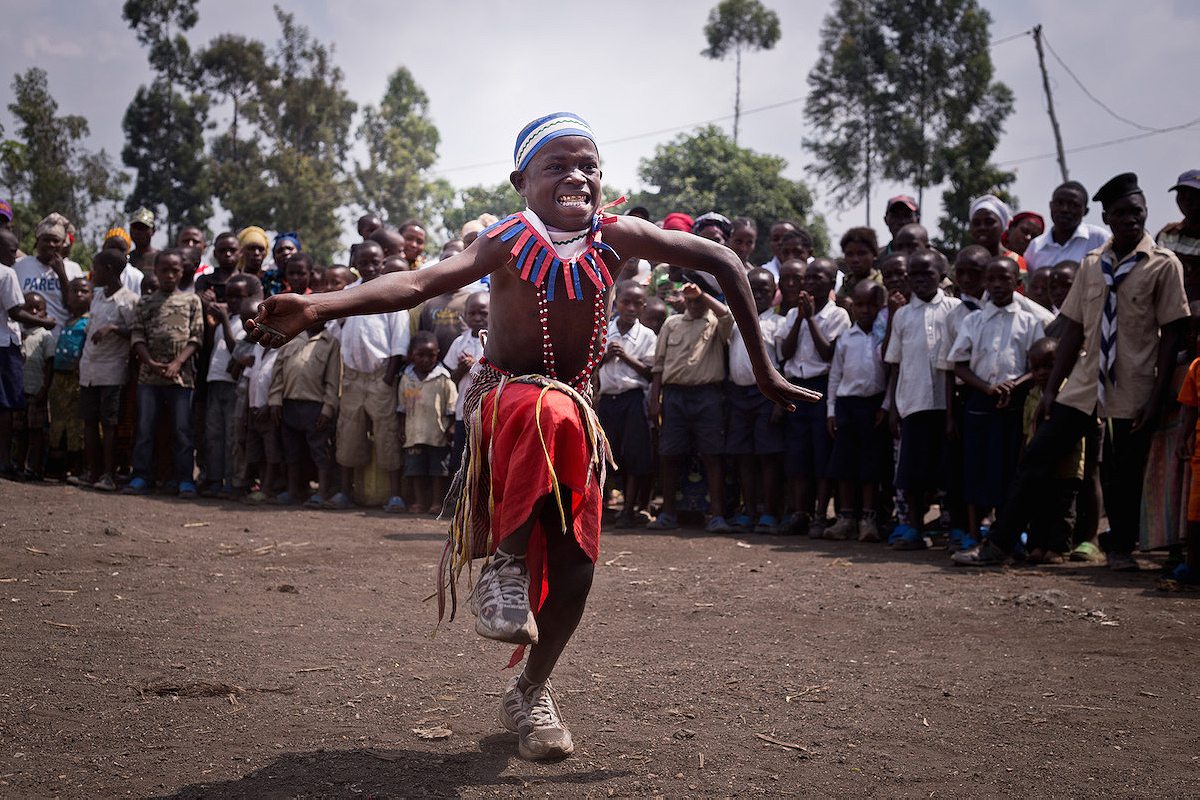All kinds of troops walk around the city of Goma. The military, the police, UN peacekeepers and soldiers. And then there are the Scouts.
All kinds of troops walk around the city of Goma. The military, the police, UN peacekeepers and soldiers. And then there are the Scouts. Brought in from South Africa in the early 1900s, the institution of Boy Scouts and Girl Scouts survived through wars and censorship, providing a structure to the unstable country’s youth and an alternative to violence. As of 2010, the country counted more than 71,000 Scouts. Photographer Simone Bazos lived in the Democratic Republic of the Congo for six months last year. Intrigued by their modesty and their sense of community, she spent time within their ranks. She talked to R&K from Baltimore.
Roads & Kingdoms: What was it like working in the DRC?
Simone Bazos: It is really the most inspiring and beautiful place I have ever been. I covered the end of the war and while that was very exciting work, I wish I could have stayed longer to see how things developed after it was officially over. I have stayed in touch with most of my friends there and it looks like so much has changed already.
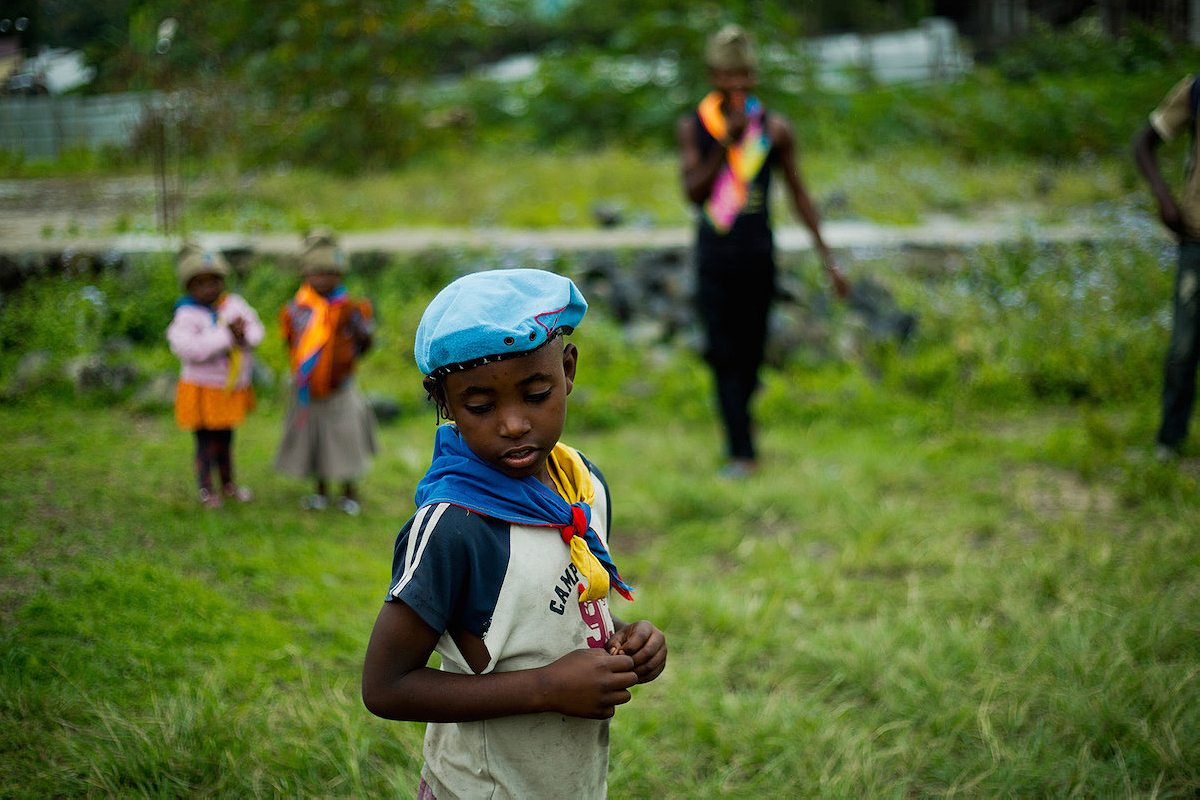
R&K: Can you describe your first encounter with the Scouts?
Bazos: I knew that they were out on Sunday mornings to [pull] security at churches around town. So I left my house around 6:30 one Sunday morning and I barely walked a mile before I found a troop marching in the middle of the road. I asked to talk to their leader, the oldest kid, he was 16. I asked if I could take a few pictures he said yes. I started going to their meetings as often as I could; they were happy someone had taken an interest.
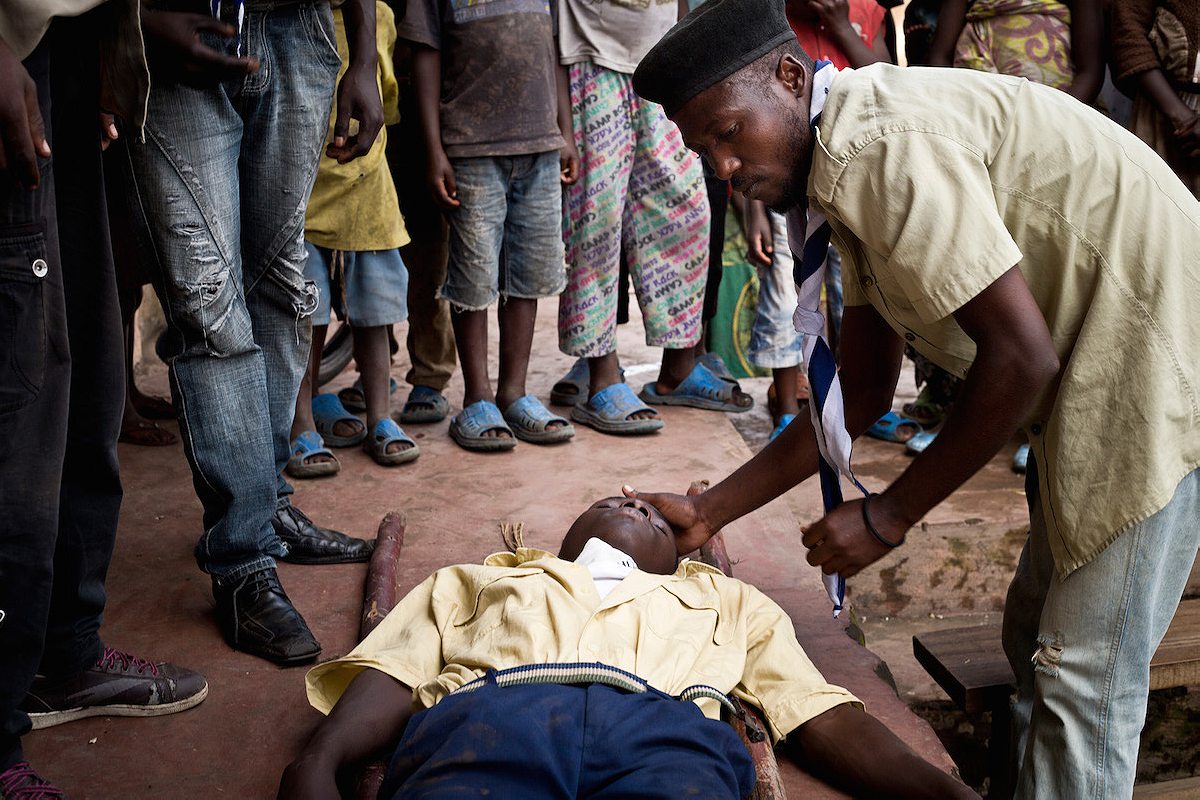
R&K: What kinds of activities did they do?
Bazos: The need for a group like the scouts was definitely greater because of the war. They somewhat emulated military style but they were good-hearted kids in need of structure and an outlet. A good portion of their meetings were song and dance. Sometimes one of the kid leaders would have a book and read to the other kids, sometimes Bible stories, sometimes an old scouting book. Most of the meetings would have a lesson. If it wasn’t reading, then maybe the leader would talk about medicinal plants, or how to help take care of old people. There would sometimes be demonstrations, like how to make a gurney using your scout kerchiefs and a few sticks. It was mostly pretty practical stuff.
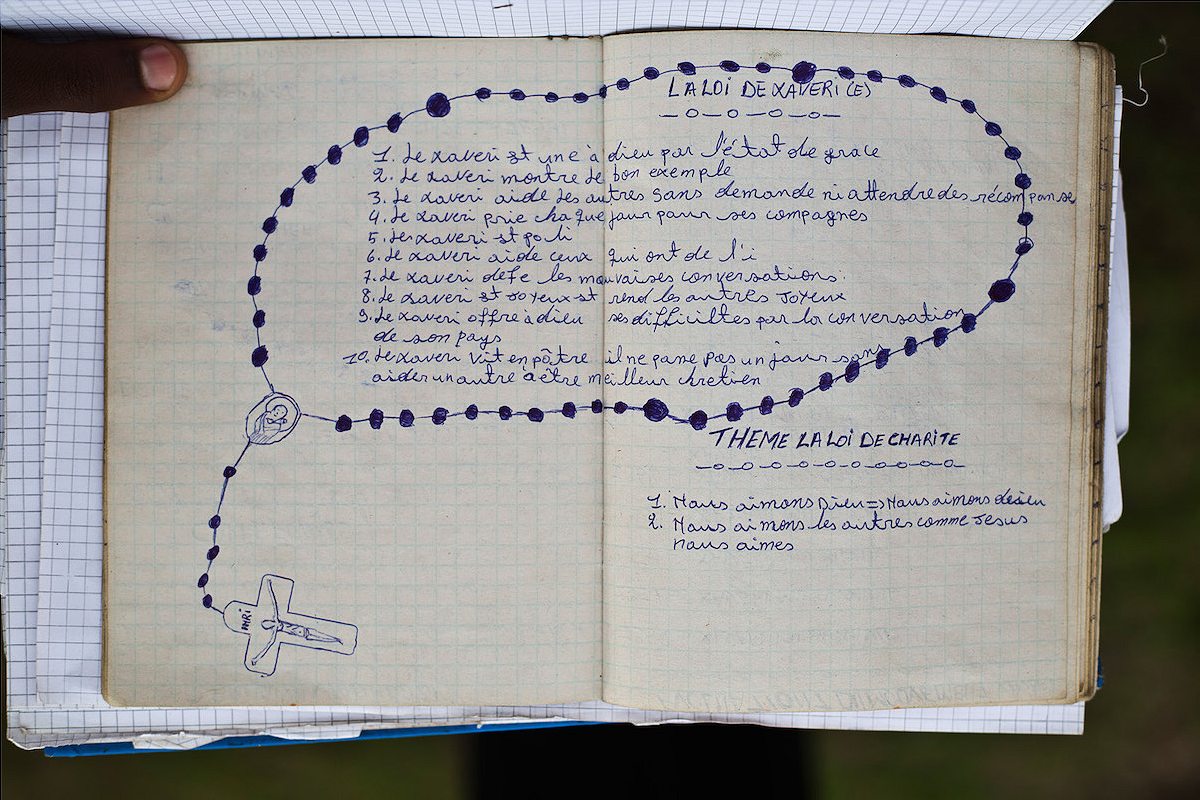
R&K: Who were the leaders?
Bazos: There were three or four youth leaders per troop. Most of them were not in school anymore. One sold peanuts on the street, another worked doing basic construction at the Goma lumber yard. The leaders would help the little kids, tie their shoes, put their hats and kerchiefs on right. They were very humble. There were a lot of teenagers in Goma who were not like them, who were very into fashion and sports, like most teenagers anywhere. But the older teenagers in the troops seemed really special to me. They wanted to impart goodness on the other younger kids—the youngest was three years old. As for the adult leaders, they ranged in age from their twenties to their sixties. Once a Scout in Congo, always a Scout. Many even get married and buried in their Scout uniforms.
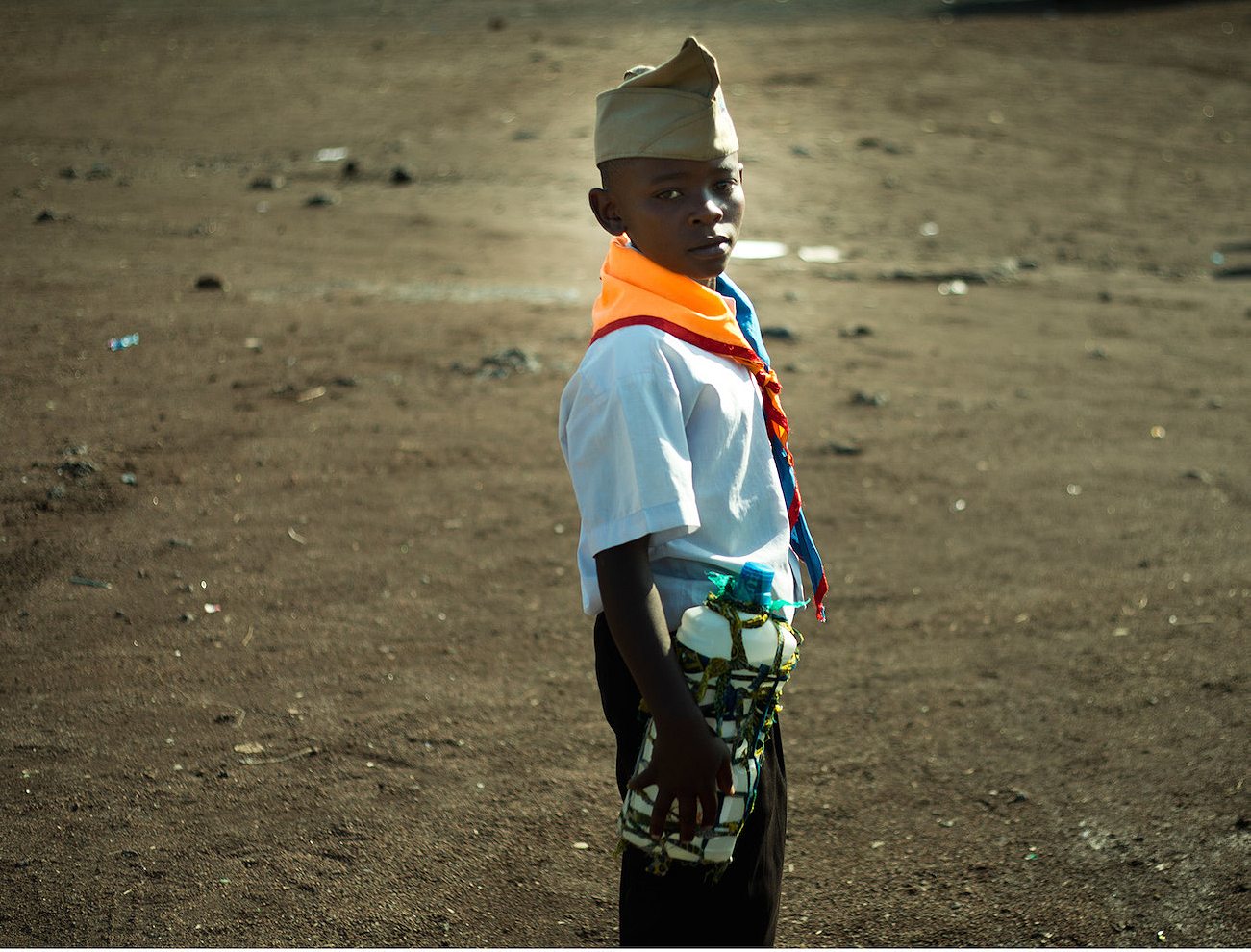
I wondered if Congolese Scouts were tying knots, pitching tents and scavenging through the woods.

R&K: Do you know a little bit about the history of Scouts in Congo?
Bazos: One of the adults told me the history as he knew it, but I have not really been able to verify. Apparently scouting reached the DRC in 1924 in Lubumbashi. It had moved its way up from South Africa, where it was introduce a bit earlier. Baden Powell’s book “Aids to Scouting” was brought to South Africa in 1907. Scouts were also banned for 14 years I believe under Mobutu. He replaced the Scouting association with a national youth group. There is a pretty religious overtone to the Scouts still today in Goma at least.
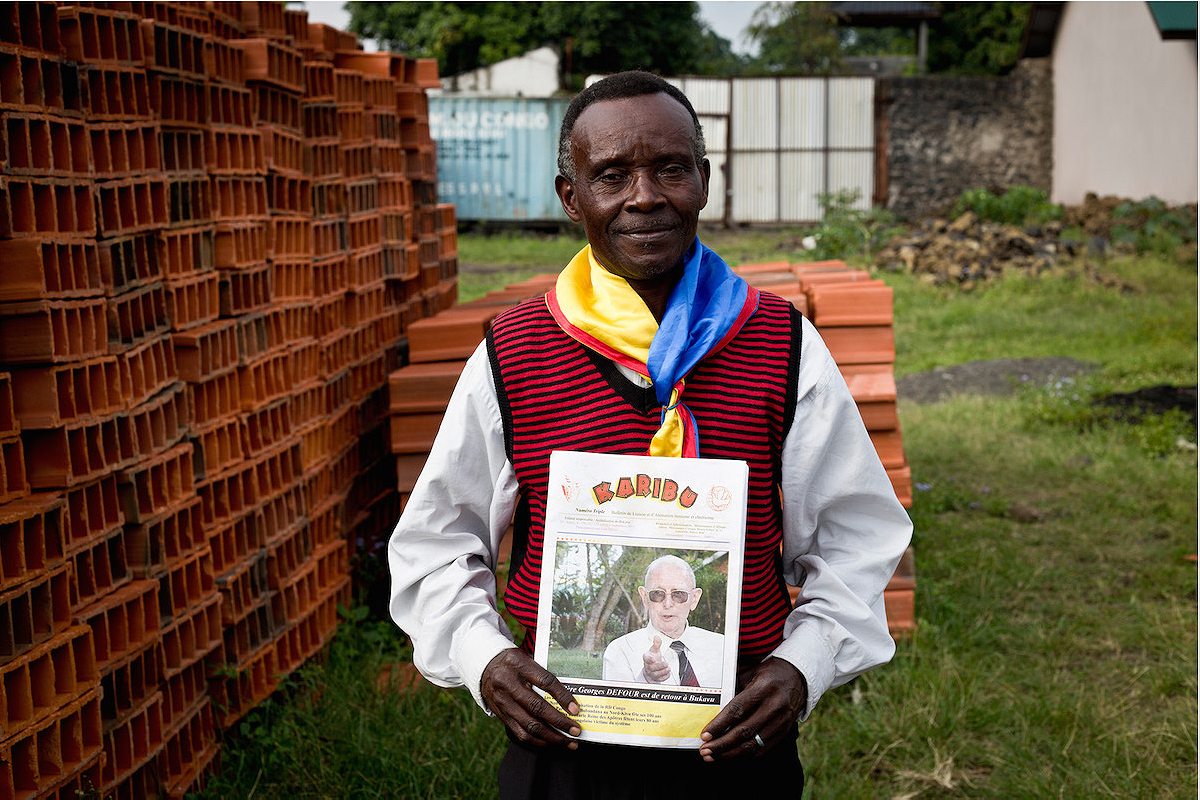
R&K: Why photograph the Scouts? On a personal level, how do you think they fit inside the story of this country?
Bazos: The Scouts are just so iconic. I was never a Girl Scout. I remember my mom telling me stories about how she was one. As a kid I had no idea that the Scouts were an international organization. And in the past years they have had so much controversy surrounding them in the U.S. I just wanted to see what kinds of things Scouts would do in a place like Congo. I wondered if Congolese Scouts were tying knots, pitching tents and scavenging through the woods. They were doing some of the things that I associated with my image of stereotypical Scouts but they also did much more. And what they did was totally reflective of their environment. My main interest in Congo overall was how life continues during war time. The Scouts were a great example of this. They still had their meetings. One of the adults was telling me how they were still able to meet even when M23 had taken Goma back in November 2012.
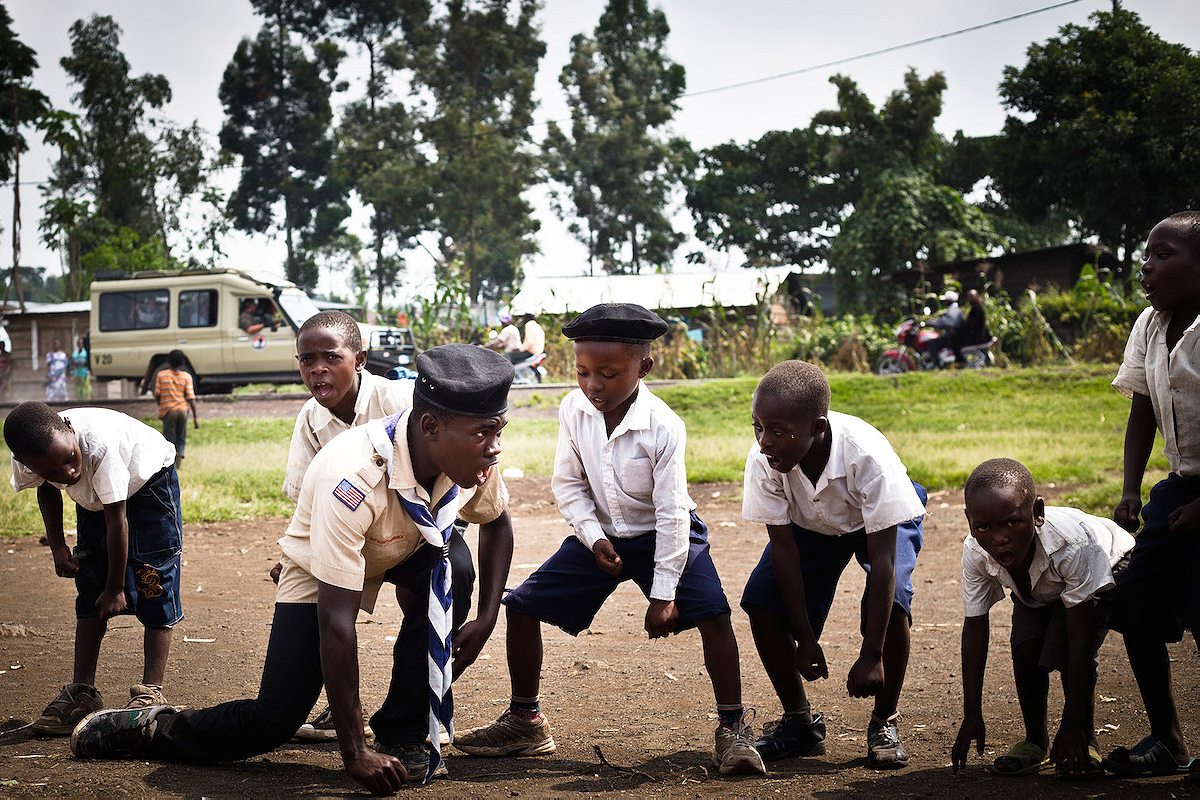
There was not much for these kids to do, largely because of the war and the country’s failing institutions.
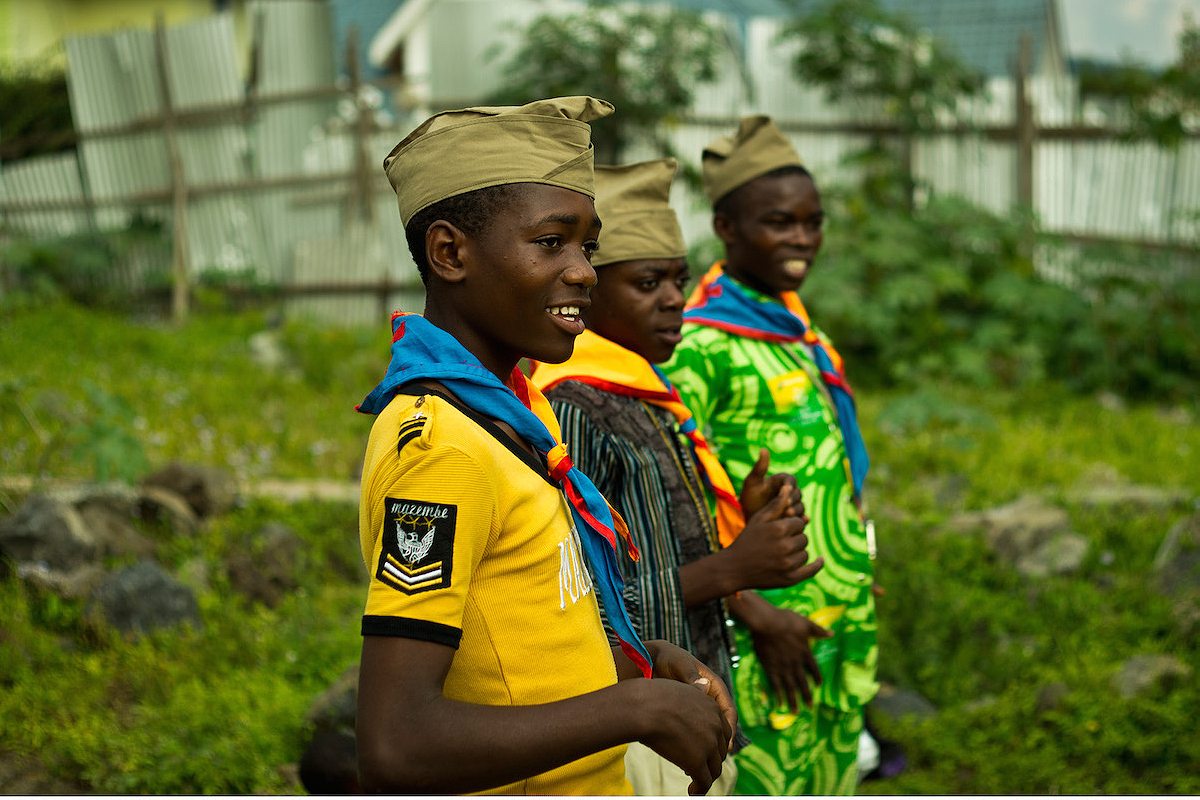
R&K: What was daily life like at that time?
Bazos: Life went on as usual for most people. From what I understand, M23 just set up obviously temporary, parallel structures like having their soldiers act as police officers. Many of my friends who were there during the takeover said that everything was pretty much the same, just with different faces and uniforms. I think especially for a place that has been in conflict for so long, it becomes normalized to a certain degree. The city itself is pretty isolated too. People who live just 15 kilometers outside of Goma had an entirely different experience. Huge amounts of people in the North Kivu province were internally displaced. Driving through those areas while the conflict was still going on was eerie, like ghost villages. There was a week in late August/early September when there were shells that fell in the city. It was really interesting because you would hear a huge explosion, but from what I saw, people were unflinching. I went to a few of the sites that were bombed in town shortly after it happened and there would be small crowds outside looking at what happened. It seemed mostly like a spectacle to those who weren’t affected directly. A few days after the bombings stopped, there were huge protests in town against the UN. The population felt were not doing enough to protect them. But the next day, everyone went back to work and it was as if the protest never happened.
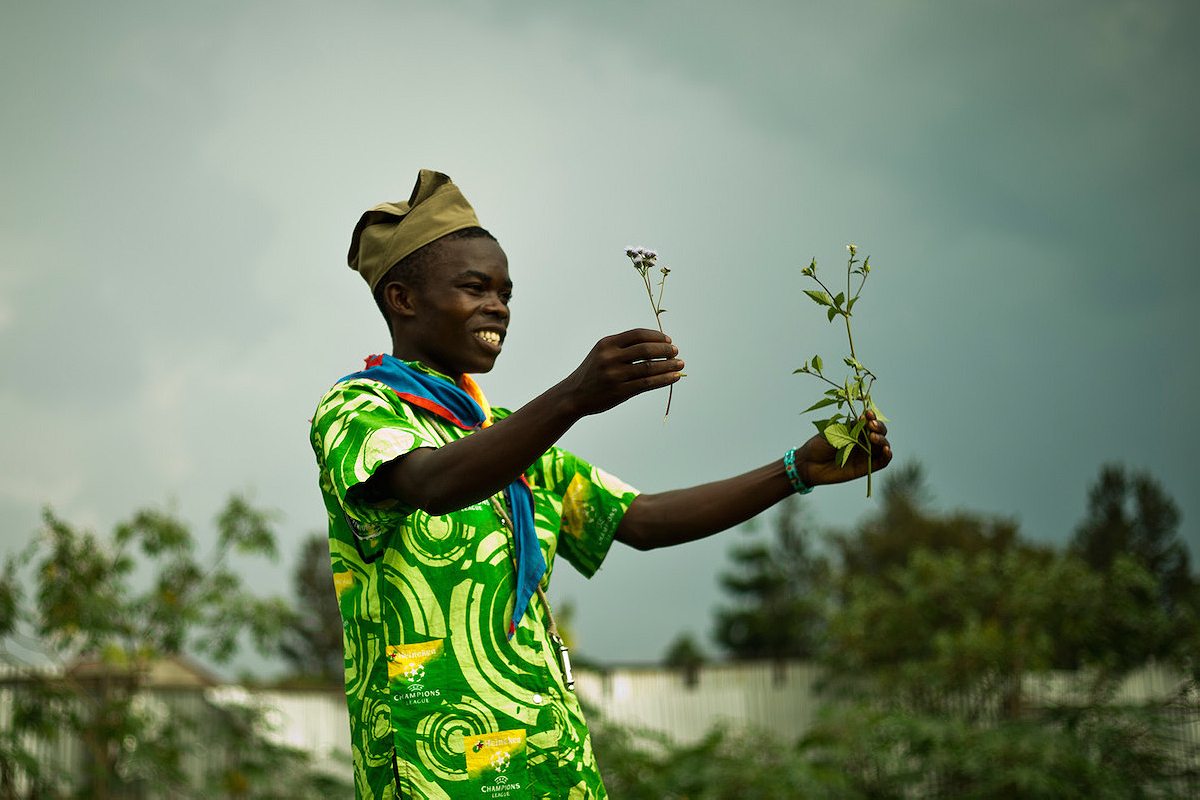
R&K: How has the country changed since?
Bazos: One of the biggest changes I saw though was in the week after the war had officially ended. I accompanied the UN convoy through the whole province and it was one of the most amazing things I have ever experienced. People had just started to come home for the first time for many in years. The ghost villages were finally repopulated.
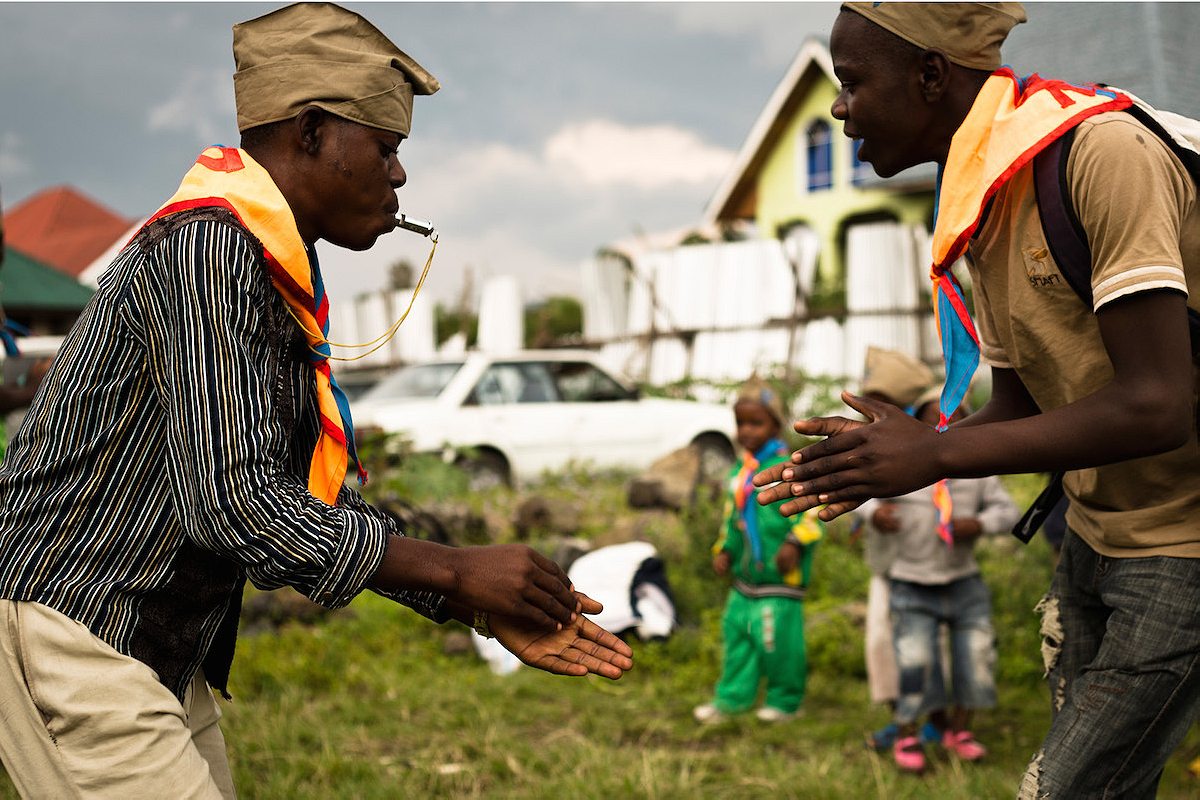
R&K: You said the need for a group like the Scouts was greater because of the war, what do you mean by that?
Bazos: There was not much for these kids to do, largely because of the war and the country’s failing institutions. Because of the lack of parenting, schooling and other activities, the necessity for a group like the Scouts was greatly increased. It provides stability, a healthy social setting, a purpose for kids who otherwise largely feel insignificant. Also, they look up to the soldiers and want to be a part of something greater than themselves. The Scouts allows them to do that without putting themselves in harms way. One of the adult Scout leaders I talked to told me that joining the Scouts prevented many kids from becoming child soldiers.

R&K: How might their role change now that the political climate is different?
Bazos: Even though the war has ended, you can’t quite call the state of Congo a peaceful one. The Scouts there had a big focus on empowerment, charity, development and environmentalism—they would spend some afternoons picking up trash and cleaning—so they still have an important mission and there is much work to be done. I think it is really interesting that in Goma, a place with hundreds of NGOs and one of the biggest UN presences in the world, the Scouts are not funded at all. One of the troops I spent a lot of time with did this thing where each time they would meet, each member would bring one lump of coal. At the end of two weeks, one kid would get to take home the big pile of coal. The sense of community among the kids was just so developed, definitely more so than any kids I’ve ever encountered back in the U.S. They really inspired me.

